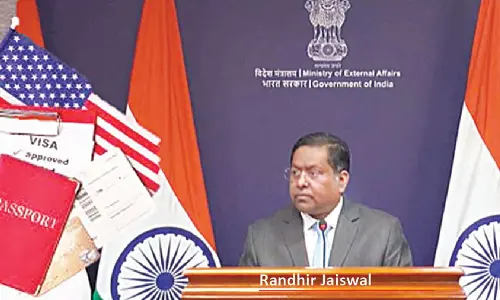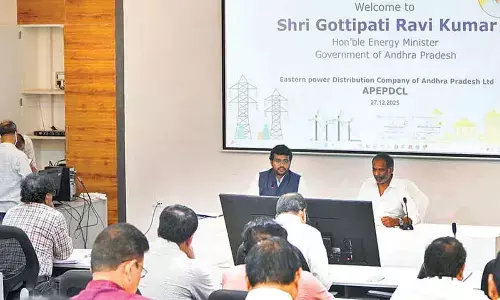Empowering women to secure their place in workforce

Empowering women to secure their place in workforce
A World Bank report states, the female labour force participation rate (FLPR) in India has witnessed a sharp decline since 2005, dropping from 32 per cent in 2005 to 18.6 per cent in 2020.
A World Bank report states, the female labour force participation rate (FLPR) in Indiahas witnessed a sharp decline since 2005, dropping from 32 per cent in 2005 to 18.6 per cent in 2020. The pandemic has set back many advances India made attempting to close the gender gap in the workforce as the country dropped from 112 to 140thposition. The Global Gender Gap Report 2021 by World Economic Forum mentioned the widened gender gap had undone decades of initiatives related to diversity inclusion by organisations worldwide.
The imbalance in the gender ratio has a long-term impact on the nation's efforts towards women's emancipation. According to the World Bank, the failure to capitalise on half the population's potential comes at a financial loss to the tune of USD 23,620 per individual. The dwindling number of women in workforce will impact their financial independence and representation in leadership roles. It also makes the workplaces less inclusive and diverse, which may potentially lead to further discrimination. It is, therefore, imperative that we take urgent measures to bridge the gap through well-planned and consistent gender-based policies.
Creating an inclusive culture
It is not about hiring more women, but about building a supportive work environment. Businesses must ensure that they create supportive policies including availability of crèches, provision for medical / family support leave to tend for family members. Though simple, these are some of the checkbox measures that will definitely help. Not only would this help working women continue their career journeys but also balance work and family life without fear.
Businesses must play a vital role in promoting women's representation in key positions. This starts by identifying deserving candidates and grooming them for leadership roles. Provide upskilling opportunities on future-ready skills as they aim to reach the C-Suite. A strong mentoring program would be the icing on the cake as women take up larger roles within the organisation. A safe, healthy and gender-sensitive workplace enhances inclusivity and opens opportunity for women to grow.
Facilitating career re-entry
Often, women take career breaks due to relocation of spouse, marriage, motherhood, or caring for a family member. Sadly, only 58 per cent of Indian women join back. The inability of women to continue professionally impacts their chances of reaching seniority, further widening the gender gap, especially in leadership roles.
Progressive companies have addressed the issue by allowing employees to take a break or recruiting them through special hiring programs to re-enter the workforce. According to one study, the percentage of returnees hired for middle and senior-level jobs went up by 25 per cent in the 2020-2021 period. Career breaks should be seen as a temporary phase and not a reason to stop working. Companies should launch programmes to help women to restart their careers after a break/gap.
With India emerging as a formidable economic power and its ability to provide gainful employment, India Inc., can be a powerful driving force towards the economic, social, and digital inclusion of women in both the organised and unorganised sectors. Gender-sensitive policies, tailored career growth plans and investment in developing them as future leaders can go a long way in helping women secure their place in the workforce.
Intent alone will not suffice; proactive steps must be taken by organisations to make women feel valued. As HR Leaders, this is the right time to exercise our POWER to EMPOWER.
(The author is Chief People Officer, Times Professional Learning)


















